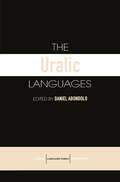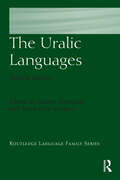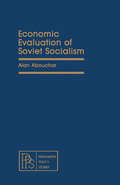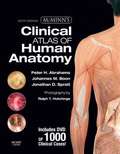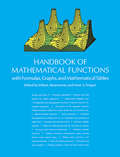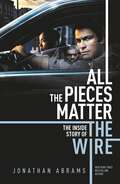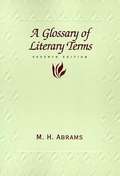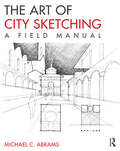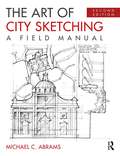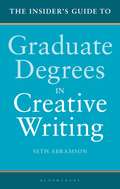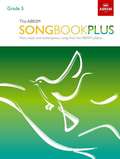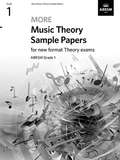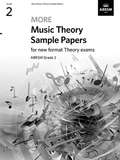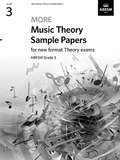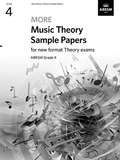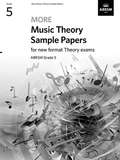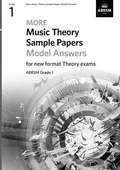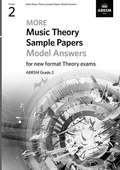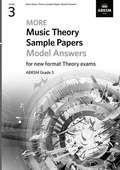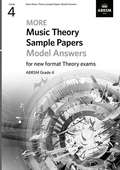- Table View
- List View
The Uralic Languages (Routledge Language Family Series)
by Daniel AbondoloThis book provides a unique, up-to-date survey of individual Uralic languages and sub-groupings from Finnish to Selkup.Spoken by more than 25 million native speakers, the Uralic languages have important cultural and social significance in Northern and Eastern Europe, as well as in immigrant communitites throughout Europe and North America. The introductory chapter gives an overview of the Uralic language family and is followed by 18 chapter-length descriptions of each language or sub-grouping, giving an analysis of their history and development as well as focusing on their linguistic structures.Written by internationally recognised experts and based on the most recent scholarship available, the volume covers major languages - including the official national languages of Estonia, Finland and Hungary - and rarely-covered languages such as Mordva, Nganasan and Khanty. The 18 language chapters are similarly-structured, designed for comparative study and cover phonology, morphology, syntax and lexicon. Those on individual languages also have sample text where available. Each chapter includes numerous tables to support and illustrate the text and bibliographies of the major references for each language to aid further study. The volume is comprehensively indexed.This book will be invaluable to language students, experts requiring concise but thorough information on related languages and anyone working in historical, typological and comparative linguistics.
The Uralic Languages (Routledge Language Family Series)
by Daniel AbondoloThis book provides a unique, up-to-date survey of individual Uralic languages and sub-groupings from Finnish to Selkup.Spoken by more than 25 million native speakers, the Uralic languages have important cultural and social significance in Northern and Eastern Europe, as well as in immigrant communitites throughout Europe and North America. The introductory chapter gives an overview of the Uralic language family and is followed by 18 chapter-length descriptions of each language or sub-grouping, giving an analysis of their history and development as well as focusing on their linguistic structures.Written by internationally recognised experts and based on the most recent scholarship available, the volume covers major languages - including the official national languages of Estonia, Finland and Hungary - and rarely-covered languages such as Mordva, Nganasan and Khanty. The 18 language chapters are similarly-structured, designed for comparative study and cover phonology, morphology, syntax and lexicon. Those on individual languages also have sample text where available. Each chapter includes numerous tables to support and illustrate the text and bibliographies of the major references for each language to aid further study. The volume is comprehensively indexed.This book will be invaluable to language students, experts requiring concise but thorough information on related languages and anyone working in historical, typological and comparative linguistics.
The Uralic Languages (Routledge Language Family Series)
by Daniel Abondolo Riitta-Liisa ValijärviThis book provides an up-to-date survey of Uralic languages, using a new theoretical framework commonly used in language description. Spoken by more than 25 million native speakers, the Uralic languages have important cultural and social significance in Europe, as well as in other communities throughout the world. The introductory chapter gives an overview of the Uralic language family, and is followed by 20 chapter-length descriptions of each language or sub-grouping, giving an analysis of their history and development, as well as their linguistic structures. Each chapter includes tables to support the text, and bibliographies of the major references for each language.
Economic Evaluation of Soviet Socialism: Pergamon Policy Studies
by Alan AboucharEconomic Evaluation of Soviet Socialism examines the economic achievements of Soviet socialism from a variety of perspectives. The Soviet Union's failure to eliminate inflation and its implications for the economy are considered in comparison to a capitalist developed or industrializing economy. The effects of inflation on welfare and efficiency are also discussed. This book is comprised of eight chapters and opens by sketching the distinguishing characteristics of Soviet socialism as well as six major sources of interest in the evaluation of Soviet socialism. The next section deals with three kinds of issues relating to Soviet socialist performance: organizational-structural aspects, economic growth, and efficiency. Questions such as whether the Soviet economy may have been able to obviate the traditional undesirable consequences of inflation are addressed. The growth of the economy and of important macroeconomic aggregates, such as national income, industrial production, and consumption, is also analyzed. The remaining chapters focus on economic efficiency in agriculture and industry in relation to the Soviet price mechanism. This monograph will be of interest to economists, social scientists, policymakers, and government officials.
Clinical Atlas Of Human Anatomy (PDF)
by Peter H. Abrahams Jonathan D. Spratt Johannes M. Boon Ralph T. HutchingsMap out all of the key structures of the human body with examples of real human dissections. . . and easily place them in a clinical context! This popular atlas incorporates an unrivalled collection of cadaveric, osteological, and clinical images with surface anatomy models, interpretive drawings, orientational diagrams, and diagnostic images - emphasizing a well-rounded visual perspective of a real human body as seen by modern doctors. The 6th Edition offers new endoscopic images, 250 new dissection photos (including eight pages of new dissections on lymphatics), and 300 new clinical thumbnails. A bonus DVD - new to this edition - includes 1,000 additional photos not found in the text, as well as questions and answers that accompany each section from the book. Displays X-ray, MR, and CT images next to corresponding dissections, showing how to recognize anatomic structures in diagnostic images. Presents interpretive drawings to help you differentiate between structures with a similar appearance (i. e. , veins, arteries, and nerves). Offers orientational diagrams that make it easier to relate the dissections in the text to real experiences in the lab. Provides an unobstructed view of the artwork by using a numbered labeling system, which also allows you to self-test by covering up the key and identifying each numbered structure yourself. Presents 300 new clinical thumbnails - with relevant clinical notes and additional images on the DVD - that emphasize the clinical relevance of images depicted and demonstrate their clinical relevance. Offers 250 new dissection photos that enhance the overall quality and scope of the images shown #65533; eight pages of new dissections on lymphatics #65533; 50 new illustrations reflecting the increasing use of diagnostic imaging in anatomy teaching #65533; and 20 new endoscopic images to reinforce memorization of structures. Features a bonus DVD with 1,000 clinical photos not found in the text. . . more information on clinical correlations. . . and questions and answers that accompany each section of the book.
Handbook of Mathematical Functions: with Formulas, Graphs, and Mathematical Tables
by Milton Abramowitz Irene A. StegunDespite the increasing use of computers, the basic need for mathematical tables continues. Tables serve a vital role in preliminary surveys of problems before programming for machine operation, and they are indispensable to thousands of engineers and scientists without access to machines. Because of automatic computers, however, and because of recent scientific advances, a greater variety of functions and a higher accuracy of tabulation than have been available until now are required.In 1954, a conference on mathematical tables, sponsored by M.I.T. and the National Science Foundation, met to discuss a modernization and extension of Jahnke and Emde's classical tables of functions. This volume, published 10 years later by the U.S. Department of Commerce, is the result. Designed to include a maximum of information and to meet the needs of scientists in all fields, it is a monumental piece of work, a comprehensive and self-contained summary of the mathematical functions that arise in physical and engineering problems.The book contains 29 sets of tables, some to as high as 20 places: mathematical constants; physical constants and conversion factors (6 tables); exponential integral and related functions (7); error function and Fresnel integrals (12); Bessel functions of integer (12) and fractional (13) order; integrals of Bessel functions (2); Struve and related functions (2); confluent hypergeometric functions (2); Coulomb wave functions (2); hypergeometric functions; Jacobian elliptic and theta functions (2); elliptic integrals {9); Weierstrass elliptic and related functions; parabolic cylinder functions {3); Mathieu functions (2); spheroidal wave functions (5); orthogonal polynomials (13); combinatorial analysis (9); numerical interpolation, differentiation and integration (11); probability functions (ll); scales of notation (6); miscellaneous functions (9); Laplace transforms (2); and others.Each of these sections is prefaced by a list of related formulas and graphs: differential equations, series expansions, special functions, and other basic relations. These constitute an unusually valuable reference work in themselves. The prefatory material also includes an explanation of the numerical methods involved in using the tables that follow and a bibliography. Numerical examples illustrate the use of each table and explain the computation of function values which lie outside its range, while the editors' introduction describes higher-order interpolation procedures. Well over100 figures illustrate the text.In all, this is one of the most ambitious and useful books of its type ever published, an essential aid in all scientific and engineering research, problem solving, experimentation and field work. This low-cost edition contains every page of the original government publication.
All the Pieces Matter: The Inside Story of The Wire
by Jonathan AbramsThe definitive oral history of the iconic and beloved TV show The Wire, as told by the actors, writers, directors, and others involved in its creationSince its final episode aired in 2008, the acclaimed crime drama The Wire has only become more popular and influential. The issues it tackled, from the failures of the drug war and criminal justice system to systemic bias in law enforcement and other social institutions, have become more urgent and central to the national conversation. The show's actors, such as Idris Elba and Dominic West, have gone on to become major stars. Its creators and writers, including David Simon and Richard Price, have developed dedicated cult followings of their own. Universities use the show to teach everything from film theory, to criminal justice and sociology. Politicians and activists reference it when discussing policy. When critics compile lists of the Greatest TV Shows of All Time, The Wire routinely takes the top spot. It is arguably one of the great works of art America has produced in the 21st century.But while there has been a great deal of critical analysis of the show and its themes, until now there has never been a definitive, behind-the-scenes take on how it came to be made. With unparalleled access to all the key actors and writers involved in its creation, Jonathan Abrams tells the astonishing, compelling, and complete account of The Wire, from its inception and creation through its end and powerful legacy.'From the moment The Wire ended, all I have wished for is one more season. Jonathan Abrams has given us something just as valuable — the complete story of how something this wonderful, rich, and intricate came to be' - Mike Schur, creator of Parks and Recreation, Brooklyn 99 and The Good Place'The definitive dissection of television’s most politically meaningful invention' - Chuck Klosterman, New York Times bestselling author of But What if We’re Wrong? and I Wear The Black Hat'Abrams indisputably has created a thorough examination of The Wire’s conception, production, and lingering cultural afterlife' - Publishers Weekly
A Glossary Of Literary Terms
by M. H. AbramsFirst published in 1957, A Glossary of Literary Terms contains succinct essays on the terms used in discussing literature, literary history, and literary criticism. This text is an indispensable reference for students.
A Glossary of Literary Terms
by M. H. Abrams Geoffrey Galt HarphamThis book defines and discusses terms, critical theories, and points of view that are commonly applied in classifying, analyzing, interpreting, and writing the history of works of literature. The component entries, together with the guides to further reading included in most of them, are oriented especially toward undergraduate students of English, American, and other literatures. Over the decades, however, the book has proved to be a useful and popular work of reference for advanced students, as well as for the general reader with literary interests.
The Art of City Sketching: A Field Manual
by Michael AbramsThe Art of City Sketching: A Field Manual guides you through the laborious and sometimes complex process of sketching what you see in the built environment so that you can learn to draw what you imagine. Illustrated with hundreds of drawings by students and professionals of cityscapes around Europe and the United States, the book helps you develop your conceptual drawing skills so that you can communicate graphically to represent the built environment. Short exercises, projects, drawing tips, step-by-step demonstrations, and composition do's and don'ts make it easy for you to get out into the city and experiment in your own work. Author Michael Abrams uses his experience as a field sketching instructor, to show you that by drawing, you can discover, analyze, and comprehend the built environment.
The Art of City Sketching: A Field Manual
by Michael AbramsThe Art of City Sketching: A Field Manual guides you through the laborious and sometimes complex process of sketching what you see in the built environment so that you can learn to draw what you imagine. Illustrated with hundreds of drawings by students and professionals of cityscapes around Europe and the United States, the book helps you develop your conceptual drawing skills so that you can communicate graphically to represent the built environment. Short exercises, projects, drawing tips, step-by-step demonstrations, and composition do's and don'ts make it easy for you to get out into the city and experiment in your own work. Author Michael Abrams uses his experience as a field sketching instructor, to show you that by drawing, you can discover, analyze, and comprehend the built environment.
The Art of City Sketching: A Field Manual
by Michael C. AbramsThe Art of City Sketching: A Field Manual guides readers through the process of freehand architectural sketching and explains orthographic, diagrammatic, three-dimensional, and perceptual-type drawings. The book presents hundreds of drawings of historic buildings and urban spaces, examples, and exercises, which help readers develop their drawing skills and employ sketching as an analytical tool. The book is divided into three parts, based on the reader’s skill level: beginner, intermediate, and advanced. As an architect and field sketching instructor, the author shows that through drawing the reader can discover, analyze, and comprehend the built environment. The new edition of The Art of City Sketching expands on the drawing techniques of the previous version by adding new drawing examples, exercises, and two new chapters—Chiaroscuro and Storyboard. New drawing tips, demonstrations, and composition "do’s and don’ts" will support readers when they illustrate their viewpoint of the city by using simple drawing tools. The lessons in this book will allow readers to mix method with imagination and sensibility.
The Art of City Sketching: A Field Manual
by Michael C. AbramsThe Art of City Sketching: A Field Manual guides readers through the process of freehand architectural sketching and explains orthographic, diagrammatic, three-dimensional, and perceptual-type drawings. The book presents hundreds of drawings of historic buildings and urban spaces, examples, and exercises, which help readers develop their drawing skills and employ sketching as an analytical tool. The book is divided into three parts, based on the reader’s skill level: beginner, intermediate, and advanced. As an architect and field sketching instructor, the author shows that through drawing the reader can discover, analyze, and comprehend the built environment. The new edition of The Art of City Sketching expands on the drawing techniques of the previous version by adding new drawing examples, exercises, and two new chapters—Chiaroscuro and Storyboard. New drawing tips, demonstrations, and composition "do’s and don’ts" will support readers when they illustrate their viewpoint of the city by using simple drawing tools. The lessons in this book will allow readers to mix method with imagination and sensibility.
The Insider's Guide to Graduate Degrees in Creative Writing
by Dr Seth AbramsonThere are so many different graduate creative writing programs out there! How do I find the right one for me? Bringing together data from both Master's and doctoral creative writing programs and interviews with program applicants, students, and faculty, this is a complete practical guide to choosing a graduate creative writing program and putting together a successful application. The Insider's Guide to Graduate Degrees in Creative Writing answers frequently asked questions on such topics as: · Application prerequisites · Program sizes and durations · Funding · Acceptance rates· Cost of living· Program curricula and demographics· Workshopping techniques· Student-faculty ratios· Residency options· Postgraduate fellowship placement · Postgraduate job placement· Programs' reputations and histories The book also includes comprehensive and up-to-date hard data on the hundreds of terminal-degree graduate creative writing programs available throughout the US, UK, and internationally, making this an essential read for anyone planning to pursue a low- or full-residency graduate creative writing degree.
The Insider's Guide to Graduate Degrees in Creative Writing
by Seth AbramsonThere are so many different graduate creative writing programs out there! How do I find the right one for me? Bringing together data from both Master's and doctoral creative writing programs and interviews with program applicants, students, and faculty, this is a complete practical guide to choosing a graduate creative writing program and putting together a successful application. The Insider's Guide to Graduate Degrees in Creative Writing answers frequently asked questions on such topics as: · Application prerequisites · Program sizes and durations · Funding · Acceptance rates· Cost of living· Program curricula and demographics· Workshopping techniques· Student-faculty ratios· Residency options· Postgraduate fellowship placement · Postgraduate job placement· Programs' reputations and histories The book also includes comprehensive and up-to-date hard data on the hundreds of terminal-degree graduate creative writing programs available throughout the US, UK, and internationally, making this an essential read for anyone planning to pursue a low- or full-residency graduate creative writing degree.
The ABRSM Songbook Plus, Grade 5: More classic and contemporary songs from the ABRSM syllabus (ABRSM Songbooks (ABRSM) Ser.)
by AbrsmA new addition to ABRSM's bestselling Songbook series, ABRSM Songbook Plus features an unrivalled choice of repertoire in a huge variety of styles that will inspire singers of all ages. An essential collection for those preparing for their Grade 5 exam or for anyone who loves to sing. The Grade 1, 2, 3 and 4 books are also available on request.
More Music Theory Sample Papers, ABRSM Grade 1 (PDF)
by AbrsmABRSM’s official More Music Theory Sample Papers are additional resources for candidates preparing for our new online Music Theory exams. Providing more authentic practice material and a reliable guide as to what to expect in the exam. Model Answers are also available.
More Music Theory Sample Papers, ABRSM Grade 2 (PDF)
by AbrsmABRSM’s official More Music Theory Sample Papers are additional resources for candidates preparing for our new online Music Theory exams. Providing more authentic practice material and a reliable guide as to what to expect in the exam. Model Answers are also available.
More Music Theory Sample Papers, ABRSM Grade 3 (PDF)
by AbrsmABRSM’s official More Music Theory Sample Papers are additional resources for candidates preparing for our new online Music Theory exams. Providing more authentic practice material and a reliable guide as to what to expect in the exam. Model Answers are also available.
More Music Theory Sample Papers, ABRSM Grade 4 (PDF)
by AbrsmABRSM’s official More Music Theory Sample Papers are additional resources for candidates preparing for our new online Music Theory exams. Providing more authentic practice material and a reliable guide as to what to expect in the exam. Model Answers are also available.
More Music Theory Sample Papers, ABRSM Grade 5 (PDF)
by AbrsmABRSM’s official More Music Theory Sample Papers are additional resources for candidates preparing for our new online Music Theory exams. Providing more authentic practice material and a reliable guide as to what to expect in the exam. Model Answers are also available.
More Music Theory Sample Papers Model Answers, ABRSM Grade 1 (PDF)
by AbrsmModel answers for More Sample Papers for ABRSM’s Theory exams Grade 1. Updated for the new format ABRSM Theory exams.
More Music Theory Sample Papers Model Answers, ABRSM Grade 2 (PDF)
by AbrsmModel answers for More Sample Papers for ABRSM’s Theory exams Grade 2. Updated for the new format ABRSM Theory exams.
More Music Theory Sample Papers Model Answers, ABRSM Grade 3 (PDF)
by AbrsmModel answers for More Sample Papers for ABRSM’s Theory exams Grade 3. Updated for the new format ABRSM Theory exams.
More Music Theory Sample Papers Model Answers, ABRSM Grade 4
by AbrsmModel answers for More Sample Papers for ABRSM’s Theory exams Grade 4. Updated for the new format ABRSM Theory exams.
